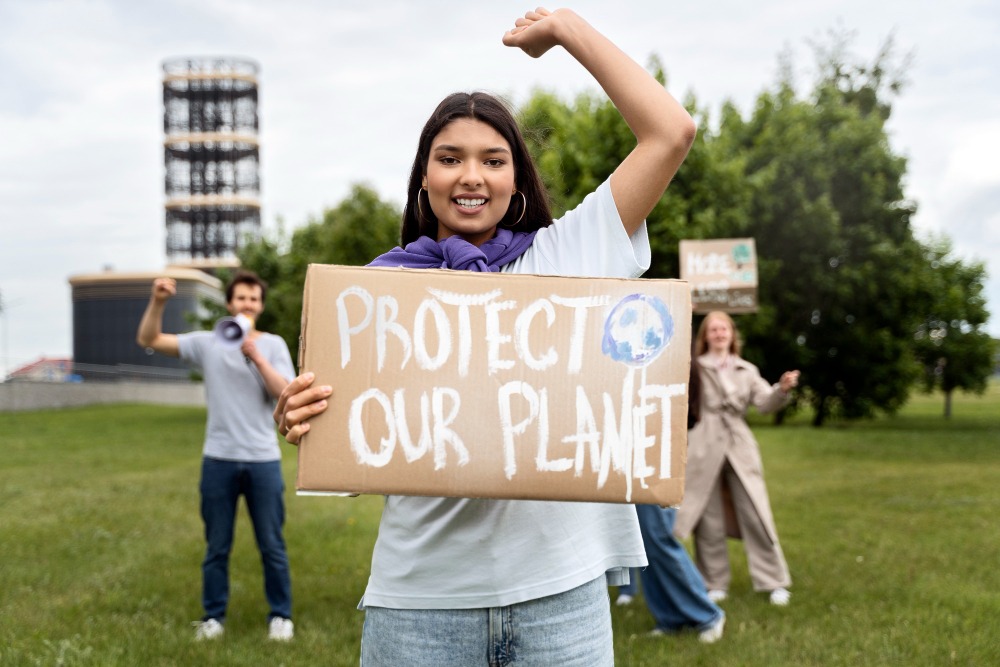Climate change remains one of the most pressing challenges of our time. As we progress through 2024, innovative actions and technologies are being implemented worldwide to mitigate its effects and promote sustainability. This blog explores six key innovations and actions that are making a substantial impact in the fight against climate change, paving the way for a greener future.
1. Advanced Renewable Energy Solutions
Solar and Wind Power Advancements
Renewable energy sources like solar and wind power continue to evolve, becoming more efficient and cost-effective. In 2024, significant advancements in solar panel technology, such as perovskite solar cells, are driving higher energy conversion rates and reducing production costs. Wind energy is also benefiting from innovations in turbine design and materials, leading to more efficient and durable wind turbines.
Floating Solar Farms
Floating solar farms, or floating photovoltaics (FPV), are emerging as a promising solution for maximizing solar energy generation. These installations, placed on bodies of water, reduce land use and benefit from the cooling effect of water, which enhances solar panel efficiency. Countries like Japan and China are leading the way in deploying large-scale FPV projects.
2. Carbon Capture and Storage (CCS)
Direct Air Capture (DAC)
Direct Air Capture (DAC) technology is a groundbreaking approach to reducing atmospheric carbon dioxide levels. By capturing CO2 directly from the air and storing it underground or utilizing it in industrial processes, DAC helps mitigate the greenhouse gas effect. Companies like Climeworks and Carbon Engineering are at the forefront of developing and deploying DAC systems.
Enhanced Oil Recovery (EOR)
Enhanced Oil Recovery (EOR) is another application of carbon capture technology. CO2 captured from industrial sources is injected into oil fields to increase oil recovery while simultaneously sequestering the CO2 underground. This dual-purpose approach helps reduce net carbon emissions and supports energy production.
3. Sustainable Agriculture Practices
Regenerative Agriculture
Regenerative agriculture is a holistic farming approach that focuses on restoring soil health, enhancing biodiversity, and improving water management. Practices such as cover cropping, no-till farming, and agroforestry help sequester carbon in the soil and increase resilience to climate change. Farmers worldwide are adopting regenerative techniques to boost yields and reduce environmental impact.
Precision Agriculture
Precision agriculture leverages technology to optimize farming practices and resource use. By utilizing data from sensors, drones, and satellite imagery, farmers can make informed decisions about irrigation, fertilization, and pest control. This targeted approach minimizes waste, reduces greenhouse gas emissions, and enhances crop productivity.
External Resource:
4. Electrification of Transportation
Electric Vehicles (EVs)
The electrification of transportation is a crucial step in reducing greenhouse gas emissions. In 2024, electric vehicles (EVs) will be more accessible and affordable than ever before. Advances in battery technology, such as solid-state batteries, are extending EV range and reducing charging times. Governments and automakers are also expanding charging infrastructure to support the growing EV market.
Electrified Public Transit
Electrified public transit systems, including electric buses and trains, are playing a significant role in reducing urban air pollution and carbon emissions. Cities worldwide are investing in electric transit solutions to create cleaner and more efficient transportation networks.
5. Green Building and Urban Planning
Sustainable Building Materials
The construction industry is embracing sustainable building materials to reduce its carbon footprint. Innovations such as cross-laminated timber (CLT), recycled steel, and low-carbon concrete are becoming mainstream in 2024. These materials not only reduce emissions but also enhance the energy efficiency and durability of buildings.
Green Roofs and Walls
Green roofs and walls are gaining popularity in urban areas for their ability to mitigate the urban heat island effect, improve air quality, and enhance biodiversity. These living installations provide insulation, reduce stormwater runoff, and create green spaces that promote well-being.
6. Climate Policy and International Cooperation
Carbon Pricing
Carbon pricing mechanisms, such as carbon taxes and cap-and-trade systems, are essential tools for driving emissions reductions. By assigning a cost to carbon emissions, these policies incentivize businesses and individuals to adopt cleaner practices and technologies. In 2024, more countries are implementing and strengthening carbon pricing frameworks to accelerate the transition to a low-carbon economy.
Global Climate Agreements
International cooperation is critical for addressing climate change on a global scale. The Paris Agreement continues to serve as a cornerstone of global climate efforts, with countries committing to ambitious targets for reducing greenhouse gas emissions. In 2024, ongoing negotiations and collaborative initiatives aim to enhance climate action and support developing nations in their sustainability efforts.
External Resource:
Conclusion
Innovative actions and technologies are essential for combating climate change and promoting sustainability. In 2024, advancements in renewable energy, carbon capture, sustainable agriculture, transportation electrification, green building, and climate policy are making a significant impact. By embracing these innovations, we can work towards a greener and more sustainable future, ensuring a healthier planet for generations to come.







